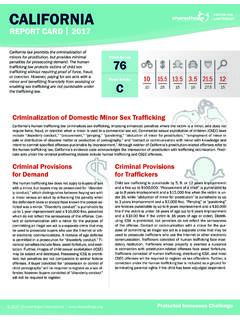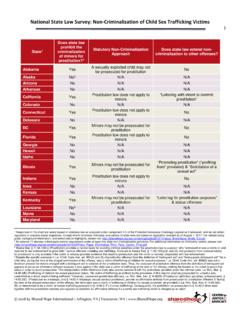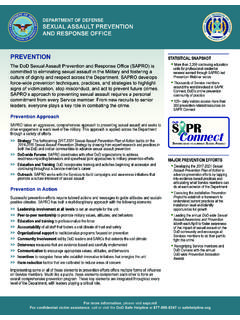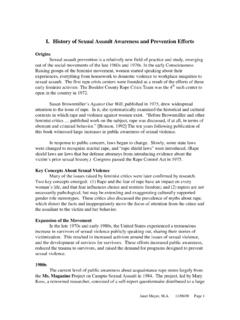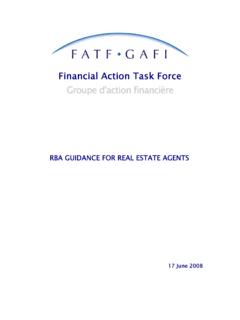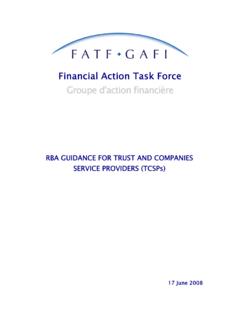Transcription of RQG - Shared Hope International
1 Promising Practices in Combatting Juvenile Sex Trafficking Surrounding Large Events and BeyondCASESTUDY1 Proactive, interagency, multidisciplinary collaboration has proven helpful in effectively addressing human trafficking surrounding large events, such as the Super Bowl, as multiple municipal entities, neighboring law enforcement agencies, various service providers, local and visiting volunteers, and heightened media focus are generally involved. This document reflects initiatives and lessons learned from the 2015 Super Bowl in the greater Phoenix area in Arizona and the 2016 Super Bowl in the California Bay Area. Experts in human trafficking and domestic minor sex trafficking, federal and local law enforcement agencies, service providers, community organizers, and sur-vivor leaders, from both regions provided examples of proactive planning, targeted police operations, strategic use of the media, increased collaboration and focused efforts to facilitate service provision to better combat and prevent human trafficking, in particular juvenile sex trafficking.
2 These efforts, captured here, are meant to serve as a tool for other locales planning to host large view of University of Phoenix Stadium, home of Super Bowl XLVIII. METHODOLOGYFrom March 2015 through May 2016, Shared Hope International interviewed anti-trafficking leaders in the greater Phoenix area and in the Bay Area regarding collaborative, proactive strategies, which were employed to address human trafficking, in particular juvenile sex trafficking, surrounding the 2015 and 2016 Super Bowls. This document reflects information received from three data collection activities: 1) individual interviews in-person and by phone; 2) a convening of approximately 50 leaders including law enforcement, service providers, survivor leaders, and community coordinators from the greater Phoenix area and the Bay Area in November 2015.
3 And 3) a national briefing call, featuring a panel of six leaders including federal and local law enforcement, a local service provider, and a human trafficking Practices in Combatting Juvenile Sex Trafficking Surrounding Large Events and BeyondCASESTUDY2In addition to all the attendees at the above convenings, Shared Hope particularly thanks the following individuals for their leadership, generosity, and willingness to contribute and inform the production of this document: Special Supervisory Agent Ryan Blay, Federal Bureau of Investigation, Civil Rights Unit/ Human Trafficking Program Manager; Washington, Christopher Watson, Program Director, Sexually Exploited Minor Program Bay Area Women Against Rape, BAWAR; Oakland, CA Assistant Special Agent in Charge Bertram Fairies, Federal Bureau of Investigation; Oakland, CA Agent Marty Parker, Federal Bureau of Investigation; Oakland, CA Agent Doug Hunt, Federal Bureau of Investigation; Oakland, CA Sergeant Kurtis Stenderup, Santa Clara County Sheriff 's Office; Santa Clara, CA Sharan Dhanoa, Coordinator of the South Bay Coalition to End Human Trafficking, No Traffick Ahead; CA Brian Wo, Bay Area Anti-Trafficking Coalition; CA Rose Mukhar, Shared Hope International Ambassador of Hope, MISSEY Board Member; CA Sarai Theolinda Smith-Mazariegos, SHADE Project, MISSSEY Board Member, Survivor Leader; CA Sergeant Clay Sutherlin, Phoenix Police Department.
4 Phoenix, AZ Savannah Sanders, Human Trafficking Services Manager, SAFE (Safeguarding Adolescents from Exploitation) Action Project a Program of Sojourner Center Detective Christi Decoufle, Phoenix Police Department / A Victim's Voice, LLC; AZ Dominique Roe-Sepowitz, Office of Sex Trafficking Intervention Research at Arizona State University, Director Sergeant Domenick Kaufman, Mesa Police Department; AZ Detective Scott Carpenter, Scottsdale Police Department; AZThis document is a product of the Regional Collaboration Project of Shared Hope International and is primarily authored by Rachel Harper, Policy Counsel, under the leadership of Linda Smith, Founder and President and Samantha Vardaman, Senior Practices in Combatting Juvenile Sex Trafficking Surrounding Large Events and BeyondCASESTUDY3 PREVENTION PLANNINGU sing Media for Awareness Campaigns and deterrence Strategically engaging media may effectively raise awareness, accurately inform the public, and in-crease deterrence , particularly with respect to de-mand of sex trafficking.
5 Although shaping a consis-tent message is difficult when dozens of groups are involved, cohesion in messaging is campaigns may successfully be used as a de-terrence mechanism. The months leading up to large events present prime opportunities to host media campaigns designed for the general public to deter demand for commercial sex with minors, to shift perspectives away from viewing victims, especially juvenile sex trafficking victims, as criminals, and to warn and discourage traffickers from operating in the area. Arizona leaders focused concerted efforts to highlight enforcement efforts in the media, par-ticularly targeting demand, starting six months in advance of the Super Bowl. Law enforcement agen-cies also endeavored to communicate that various jurisdictions were working together, and that there [was] no safe haven in the area for traffickers to operate.
6 SSA Ryan Blay, FBI. Law enforcement s public messaging was founded, in part, on the eco-nomics of trafficking and focused on discouraging buyers from engaging in commercial sex. However, various leaders reported that as the Super Bowl drew closer, media coverage was harder to secure because city leaders were sensitive to negative advertising. Panelists suggest forming agreements between law enforcement agencies or appointing one strong, dedicated Public Information Officer (PIO) between agencies to help capitalize on media coverage to increase deterrence and ensure cohesive messaging. Identifying a lead agency to coordinate press releas-es, highlighting collaborative efforts of all participat-ing agencies, and carefully presenting enforcement efforts, such as arrests, as a positive message for the area may magnify the impact of media coverage.
7 In selecting lead agencies and media platforms, pan-elists also urge future host locales to consider that busy news cycles or larger cites often have more competing news which may lessen the visibility and impact of human trafficking campaigns. By spreading the word early on that we would be cracking down on this type of criminal activity, we succeeded in stopping sex traf-fickers from operating as business as usual and in some cases de-terred traffickers from attempting to bring this crime into Bay Area communities at all. FBI Assistant Special Agent in Charge Bertram Fairries1 1 FBI, Seven Juveniles Recovered in Joint Super Bowl Operation Targeting Human Sex Trafficking, Press Release, Feb. 9, 2016, available at Practices in Combatting Juvenile Sex Trafficking Surrounding Large Events and BeyondCASESTUDY4 Collaboration between nonprofit organizations and law enforcement may also increase the impact of press releases.
8 Panelists even suggested that an NGO may work with law enforcement agencies and assume leadership in managing media coverage for collaborative law enforcement efforts. California nonprofit leaders report that they were able to meet with leaders from Arizona and build on Arizona s intentional media engagement. A Bay Area initia-tive, No Traffick Ahead, which was comprised of over 65 groups, focused concerted effort to proac-tively avoid mixed messages from different groups, in the crowded media space regarding human traf-ficking around the Super Bowl. Law enforcement leaders in Arizona and a service provider in California also warn that media cover-age and the associated logistics can become intru-sive, especially during operations. Feedback also Overall, we were able to promote a consistent message with the media that respected our diverse partner agencies.
9 This cohesive messaging was unique to our re-gion and created a sense of region-a l u n i t y . Sharan Dhanoa, Coordinator of the South Bay Coalition to End Human Trafficking, No Traffick Aheadwarned that media exposure may further exploit victims; thus, ensuring that journalism covering sting operations or trafficking trends respect vic-tims, allowing privacy at times, may be a consider-ation when planning for camera crews. COMMUNITY COLLABORATIONTask Forces, Coalitions, Trainings Collaborative community efforts can both build mo-mentum in advance of large events and help max-imize the impact of tailored initiatives for months and years after the event has occurred. Task forces or coalitions that clearly identify their goals help to avoid duplicity and confusion be-tween groups, because as multiple entities engage in anti-trafficking efforts around large events, overlap between groups and government agencies is likely without coordination.
10 Offering and leading targeted trainings is a key component to comprehensively combatting human trafficking. Prior to large events which cause an influx of people traveling to an area, presentations regarding trafficking indicators to industry person-nel who have an increased likelihood of witnessing trafficking activity, such as individuals working within the travel industry, including airline staff, or individuals working within the hospitality industry, including security, housekeeping, and reception personnel, could increase reports of suspected traf-ficking activity. One community leader in the Bay Area reported that people were particularly open Promising Practices in Combatting Juvenile Sex Trafficking Surrounding Large Events and BeyondCASESTUDY5to trainings on human trafficking leading up to the Super Bowl and that in hindsight she wishes she had the capacity and time to conduct more trainings for these eager multiple groups conducting trainings, coordi-nation is key.
